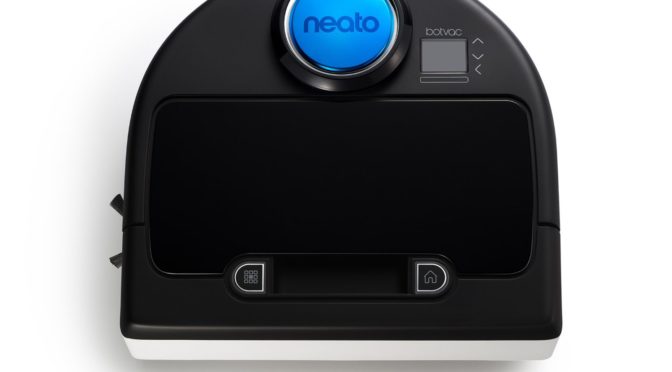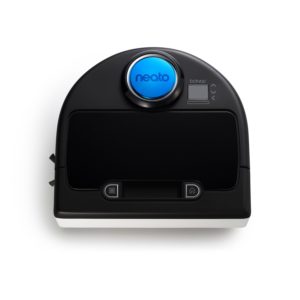
If there’s one thing we’ve discovered after reviewing dozens of robotic vacuum cleaners, it’s that if you’ve got a few hundred dollars, there’s a company willing to sell you a robot. But just because you can receive a robot that promises to clean your carpets and hardwood floors doesn’t mean it’s actually going to do so without running out of battery life every half an hour and spending 25 of those 30 minutes crashing into walls. If you’re looking for a quality robo-vacuum, there aren’t that many great choices on the market yet below $500, at least when you define “great” as smart, powerful, and reliable. The best examples of vacuums we’d consider great in this price range are probably the Roomba 890 and Botvac D5 Connected. Today we’ll review a sibling of the D5 Connected, the Neato Botvac D80 Robot Vacuum. If we were to summarize it in ten seconds, it’s basically the D5 Connected without Wi-Fi and with a smaller battery. We fully review it below and you can buy it here.
Pros, Cons, and Key Features of the Neato Botvac D80 Robot Vacuum
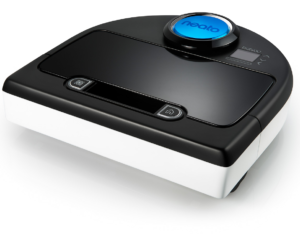
The Neato D80 Botvac is one of several shockingly smart but poorly-marketed Botvacs Neato has released in the last several years; as an example, two of the other Botvacs we’ve reviewed are named the D5 Connected, which is a more sophisticated version of the D80 we’re reviewing today, and the Connected, which is an advanced version of the D5 Connected that was released a year before the D5 Connected. We’re going to stop now before our heads explode.
At any rate, despite their nomenclature, all Botvacs feature real-time laser mapping for navigation. This essentially means they scan your home as they clean and build maps to find the most efficient routes through each room. As you can imagine, this beats the pants off the traditional robot vacuum approach of pre-programmed zig-zagging patterns or cameras. Despite the flaws of the Botvac series, there’s no doubt that they’re the smartest vacuums you can buy today.
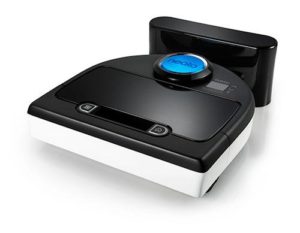
The Botvac D80 is the second-cheapest current Botvac, slotting ahead of the D3 Connected but behind the D5 Connected, non-D5 Connected, and D7 Connected. Aside from its laser-guided brain, it can clean up to 3,000 square feet per cycle, with a cycle defined as 3 cleaning passes and 2 automatic battery recharges. It doesn’t have Wi-Fi and can’t be controlled by a smart phone or tablet, although you can program cleaning schedules directly from the robot itself. Instead of a Lithium-ion battery, it uses a Nickel metal-hydride (Ni-Mh) 3600mAH battery (this one) with roughly 72 minutes of battery life and 3 hours of charging time. It needs 4 inches of clearance to clean beneath furniture, beds, and cabinets in your home and has a 13 inch cleaning radius while weighing 9 pounds. In the box, you get the robot, a charging base, a combo, side, and spiral blade brush, a pair of filters, a cleaning tool and boundary markers, and the same too-short one year warranty shared by nearly every robot vacuum manufacturer. You also get the disappointingly short six month Neato battery warranty.
What’s the difference between the Botvac D80, D5 Connected, and the Roomba 890?
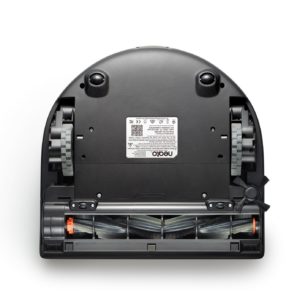
The most significant differences between the Botvac D80 and D5 Connected are smart phone compatibility and battery life. The “Connected” in the D5 Connected refers to the ability to connect it to a smart phone or tablet via a Wi-Fi card built into the robot. This allows you to do neat things like start, stop, and pause the robot from your phone, review its cleaning history and geeky stats, and locate the robot if you can’t find it. The last issue only happens when it gets stuck and runs out of battery while you’re not home; it’s a rare but occasional occurrence.
With the D80, you can schedule the robot just as easily as you would through the D5 Connected, but you’ll need to do so while physically next to the robot. You get used to it, but it’s something to keep in mind. Additionally, the D5 Connected has a significantly longer battery life at 100 minutes vs 72. This simply means the D80 needs to go back to home base to recharge a bit more frequently, and it doesn’t make a meaningful difference if you schedule cleanings, as you’ll likely be doing something else (e.g., working or sleeping) besides watching the D80 clean. Additional differences are a higher quality filter in the D5 Connected and an additional main brush (the spiral blade brush) in the D80.
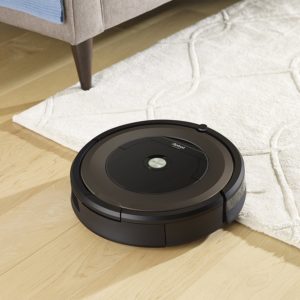
Compared to the Roomba 890, the D80 will navigate more quickly and efficiently; its laser-mapping brain gives it a far more systematic approach than the meandering and sometimes zig-zagging approach of the 890. The D80 will also resume cleaning after recharging while the 890 will simply return to its base and call it a day when its battery gets low, regardless of whether or not it’s finished cleaning. And the battery life is slightly less at around 60 minutes compared to 70-75 in the D80. However, the battery in the 890 is a more reliable one as judged by user reviews as well as by the fact that Roomba warranties it, like the rest of the vacuum, for a full year, rather than for six months as with Neato. Additionally, the 890 is Wi-Fi and smart phone compatible.
How well does the Neato Botvac D80 clean carpets, hardwood floors, and pet hair?
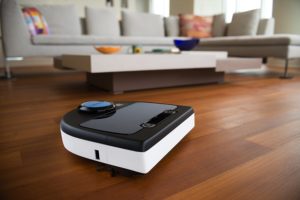
Without going into too many details to avoid repeating virtually everything we said about cleaning in the Botvac D5 Connected review, the D80 is perfectly capable of cleaning hardwood and other bare floors as well as low-pile carpets and rugs.
The only significant differences we noted from how the D5 Connected cleaned were lower battery life at 70-75 minutes vs 100 in the D5 Connected. As with the D5 Connected, we’d recommend investing in a canister vacuum like a Miele Soft Carpet or Electro+ if you want to clean high-pile carpets. If you’ve got lower-pile carpets saxonies or berbers, save your money and stick with the D80. And yes, it cleaned up after our golden retrievers almost well enough to make us forget we owned them. Almost.
Why buy the Neato Botvac D80?
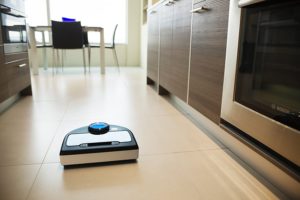
The main reasons to get the Botvac D80, in our books, are because you want one of the undoubtedly smartest robotic vacuums money can buy, but don’t want to spend a small fortune in the process for the privilege of being able to talk to it with your smart phone. If you can live without steering around your Botvac with an app, save your money and get it over the higher models like the D5 Connected. On the other hand, if you want smart phone control and more battery life, go for the D5 Connected.
The only other reason not to get the D80 involve sbattery reliability. While the vacuum itself is solid, the battery is much more fragile than that in the Roomba 890. If you prize peace of mind over intelligence, choose the 890. If you want more battery to go with it and a much smarter brain (though still not quite as smart as that in the Botvacs), upgrade to the Roomba 960, which gives you a 75 minute, highly-reliable battery and a camera-guided navigational system.
![]() You can buy the Neato Botvac D80 here on Amazon or the Roomba 890 here. For added battery life and functionality in both, you can buy the Neato Botvac D5 Connected here or the Roomba 960 here.
You can buy the Neato Botvac D80 here on Amazon or the Roomba 890 here. For added battery life and functionality in both, you can buy the Neato Botvac D5 Connected here or the Roomba 960 here.
![]() Canadians can buy the Neato Botvac D80 here on Amazon or buy the Roomba 890 here. For upgrades to either, buy the Neato Botvac D5 Connected here or the Roomba 960 here.
Canadians can buy the Neato Botvac D80 here on Amazon or buy the Roomba 890 here. For upgrades to either, buy the Neato Botvac D5 Connected here or the Roomba 960 here.
 If you find our research on PMC helpful, you can follow our efforts to keep maniacally reviewing home cleaning tools by shopping through our links above. We promise to keep fighting the good fight against every horror children, animals, and grown, yet messy humans can inflict upon a clean home.
If you find our research on PMC helpful, you can follow our efforts to keep maniacally reviewing home cleaning tools by shopping through our links above. We promise to keep fighting the good fight against every horror children, animals, and grown, yet messy humans can inflict upon a clean home.

